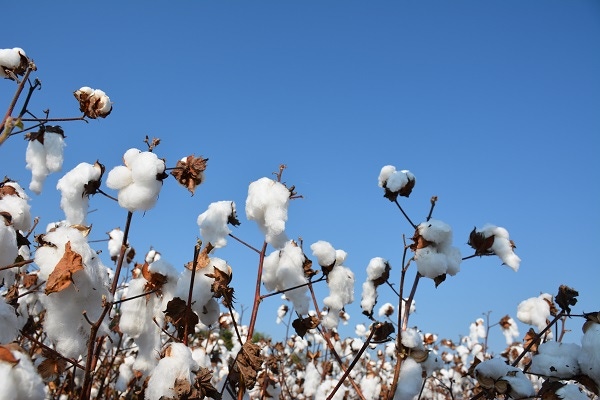July 9, 2015

The June 30 Acreage report from USDA came in at the low end of expected cotton plantings. USDA’s survey measurement) of 9.0 million acres all cotton (upland and Pima together) was 18 percent lower year-over-year. The year-over-year reduction for Texas was 16 percent, which is historically large. USDA specifically highlighted the issue of planting delays in Texas that will lead to additional surveying in July (with any revised estimate incorporated into the August supply/demand report). Over in the Mid-South, the year-over-year declines were larger and a number of states had all time record low cotton plantings.
The cotton market showed a bullish intra-day reaction following the Acreage report, which turned out to be the weekly high settlement price. The short term market reaction likely reflected the change of expectations to a somewhat tighter picture for new crop production possibilities, and hence ending stocks. With nothing else changing, the decrease in planted acreage cuts about 840,000 bales from USDA’s June 10 estimates of production and ending stocks. Both the month-over-month and year-over-year comparison of resulting ending stocks would historically be price supporting (see Figure 1). This tightening opens the possibility for an upward shift in the expected price range, say from a low of 63 to a high of 73 cents per pound.
For the latest on southwest agriculture, please check out Southwest Farm Press Daily and receive the latest news right to your inbox.
Whether Dec. ’15 cotton breaks over and lingers above 70 cents depends on how a lot of uncertain variables play out over the growing and harvest season. Much of the crop was planted late from Texas eastward. These late crops will need maximum heat units to develop, and then clear, dry, sunny weather to mature. Will they get it? The same El Niño effect that gave us a late, and perhaps high yielding, crop might also give us relatively cooler summer temperatures and/or sloppy, wet fall weather. This risk is highlighted by NOAA’s current El Niño Advisory: “There is a greater than 90 percent chance that El Niño will continue through Northern Hemisphere fall 2015, and around an 85 percent chance it will last through the 2015-16 winter.”
So, the market has to digest and discount all these possibilities. As with the 2014 crop, the over-supply of marginal grade cotton around the world will likely maintain a premium for quality. The most uncertain period is prior to USDA’s August Crop Production report, which is the first benchmark of harvested acres and production. Subsequent production reports and fall weather conditions will adjust expectations about the quantity and quality of new crop bales. This year the developing picture of the South Texas crop, based on the August and September Crop Production reports, could be particularly influential. That is because of a smaller than normal acreage in this region that is the traditional source of the earliest new crop bales for the export market. If the pipeline is thin and export demand is strong, a shortage of quality bales from South Texas could support Dec. ’15 ICE cotton futures in the early fall period.
For additional thoughts on these and other cotton marketing topics, please visit my weekly on-line newsletter at http://agrilife.org/cottonmarketing/ .
About the Author(s)
You May Also Like




